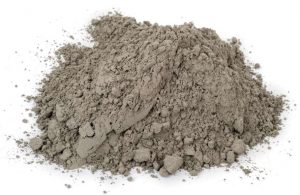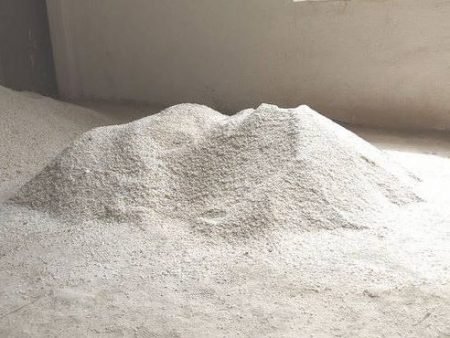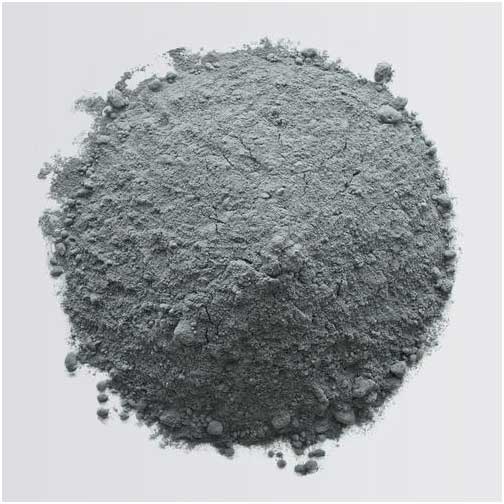Cement substitutes are materials that may be substituted, to some degree, for cement in order to improve different properties, such as strength and longevity. The use of cement substitutes is generally encouraged because of the environmental advantages gained from their diversion from the waste stream, the reduction of the energy required in their re-purposing (as compared to the manufacture of cement), and the conservation of raw materials, such as silica, alumina and iron oxide. The production of Portland cement is not only costly and energy intensive, but it also produces large amounts of carbon emissions. The production of one ton of Portland cement produces approximately one ton of CO2 in the atmosphere.
The global production of cement has grown very rapidly in recent years, and after fossil fuels and land-use change, it is the third-largest source of anthropogenic emissions of carbon dioxide. The global cement industry contributes around 6% of all man-made CO2 emissions and is consequently responsible for around 4% of man-made global warming. CO2 emissions trading is likely to be of huge importance to the industry in the future. Therefore, alternative cementitious materials are going to be in focus for industry.
Advantage of Alternative cementitious materials
Alternative cementitious materials are finely divided materials that replace or supplement the use of portland cement. Their use reduces the cost and/or improves one or more technical properties of concrete. These materials include fly ash, ground granulated blast furnace slag, condensed silica fume, limestone dust, cement kiln dust, and natural or manufactured pozzolans.

The use of these cementitious materials in blended cements offers advantages such as increased cement plant capacity, reduced fuel consumption, lower greenhouse gas emissions, control of alkali-silica reactivity, or improved durability. These advantages vary with the type of alternative cementitious material.
Discussed below are some alternatives cementitious materials.
Fly ash
Fly ash is a fine, light, glassy residue generated during ground- or powdered-coal combustion. Contractors find that fly ash enables cement to flow better in pump hoses and makes it more workable under hand-finishing. It includes substantial amounts of silicon dioxide and calcium oxide, both of which are natural ingredients in coal-bearing rock. Mixed with cement during the construction of the Hoover Dam during the 1930s, it wasn’t until the 1980s when its use in construction became commonplace. There are two types of fly ash:
- Class C fly ash is produced from the burning of younger lignite or sub-bituminous coal, and it contains considerably more lime and is stronger than its alternative, Class F fly ash. It is preferable for green building projects and is the standard type of fly ash found in residential applications. Inspectors can identify this type of cement substitute by its buff, tan, or occasionally orange coloring.
- Class F fly ash results from the burning of harder, older anthracite and bituminous coal. Excessive carbon, which may be indicated by a dark colored cement mix, means that the coal was not burned thoroughly, which may reduce the concrete’s freeze-thaw resistance.

Ground Granulated Blast-furnace Slag (GGBS)
GGBS is a by-product of the iron and steel industry. In the blast furnace, slag floats to the top of the iron and removed. GGBS is produced through quenching the molten slag in water and then grinding it into a fine powder. Chemically it is similar to, but less reactive than, Portland cement (Pc).
When mixed with water it will hydrate in a similar way to Portland cement. It is always used in combination with Portland cement, typically in the range 60% Pc and 40% GGBS – 30% Pc and 70% GGBS, according to the ultimate function of the cement. Very occasionally, it can be found up to a ratio of 90% GGBS and 10% Pc.
Concrete made with GGBS cement sets more slowly than concrete made with ordinary Portland cement, depending on the amount of GGBS in the cement mix, but also continues to gain strength over a longer period leading to improved overall durability and life expectancy.

Silica fume
Silica fume is a by-product from the manufacture of silicon. It is an extremely fine powder (as fine as smoke) and therefore it is used in concrete production in either a densified or slurry form. Due to economic considerations, the use of silica fume is generally limited to high strength concretes or concretes in aggressive environmental conditions. The most commonly used proportion of silica fume in UK – produced combinations is 10% by mass of the total cementitious content.

Slag
Slag is a byproduct of the production of iron and steel in blast furnaces. The benefits of the partial substitution of slag for cement are improved durability, reduction of life-cycle costs, lower maintenance costs, and greater concrete sustainability. The molten slag is cooled in water and then ground into a fine powder. Slag is used in very high concentrations, often occupying more than half of the total composition of cement. The energy required to grind and ship slag makes it less energy-efficient than fly ash but better than Portland cement. Slag concrete is reflective and lighter in color than fly ash and silica fume, and it may initially have a blue-green coloring that typically disappears within a week. Known as “greening,” this discoloration will not disappear if the slag is used in swimming pools or other wet locations.

Limestone fines
Limestone fines can be used as a constituent of cement to produce Portland limestone cement. BS 7979 [12] provides additional information on the specification of limestone fines for use with Portland cement. The most commonly used proportions of limestone fines in UK-produced combinations is 6-10% by mass of the total cementitious content. Limestone functions as a supplementary cementing material when it is finely ground with clinker into portland cement. Limestone quality should have at least 75% calcium carbonate by mass, a clay content less than 1.2% by mass, and an organic content less than 0.2% by mass. There are several advantages to using limestone in portland cement such as reduced energy consumption and reduced CO2 emissions. Additional cost savings are realized if limestone is available in close proximity to the site. In portland cements with high C3A (tricalcium aluminate) contents, the carbonate from the limestone will react with the C3A during hydration and may increase strength gain and resistance to sulfate attack.

Gypsum plaster
Gypsum is a not an uncommon mineral, and needs only a low temperature of around 150°C, to convert it into a very useful binding material, known as hemi-hydrate or plaster of Paris. On its own, plaster of Paris sets very rapidly when mixed with water. To give time for it to be applied, around 5% of lime and 0.8% of a retarding material (such as the keratin glue-like extracts from boiling fish bones or animal hoof and horn) are added to the plaster. Retarded plaster of Paris can be used on its own or mixed with up to three parts of clean, sharp sand. Hydrated lime can be added to increase its strength and water resistance. Gypsum plasters can be reinforced with various fibrous materials from reeds to chopped glass fibres. Gypsum plaster is not wholly resistant to moist conditions and so is normally used internally, except in the drier Mediterranean and Middle Eastern countries where it has traditionally been used as an external render

Cement Kiln Dust
Approximately 14 million tons of cement kiln dust are generated yearly in the United States with 9 million tons being reused into clinker manufacturing and 5 million tons discarded (Detwiler et al., 1996). Cement kiln dust varies as the raw material, clinker, and type of operation varies; however, it consists of unreacted raw feed, partially calcined feed and clinker dust, free lime, alkali sulfate salts, and other volatile compounds. After the alkalis are removed, the cement kiln dust can be blended with clinker to produce acceptable cement, and cement kiln dust can be added to portland cement with other materials such as slag and fly ash.

Pozzolanas
Pozzolanas are materials which, although not cementitious in themselves, will combine chemically with lime in the presence of water to form a strong cementing material. They include:
- Volcanic ash
- Power station fly ash (usually known as pfa)
- Burnt clays
- Ash from some burnt plant materials
- Silicious earths (such as diatomite)
Materials not already in a fine powdered form must be ground, and some require calcining at around 600–750°C to optimize their pozzolanic properties. Pozzolanas can be mixed with lime and/or Portland cement and can improve quality and reduce costs of concretes made from both materials. In some countries (e.g. India and Kenya), pozzolanas are mixed with Portland cement and sold as blended cement, which in many respects is similar to Portland cement. In other countries (e.g. Cuba) lime/pozzolana/Portland cement blends are sold as an alternative to Portland cement. Lime-pozzolana cement by itself can make an excellent cementing material for low-rise construction or mass concrete and in some countries (e.g. Indonesia) is still produced extensively. Pozzolanas can also be mixed with lime and/or Portland cement at the construction site but care must be taken to ensure the pozzolana is of a consistent quality and that the materials are thoroughly mixe

Alternative fuels
The use of alternative fuels not only diverts waste from landfill and saves on the need for fossil fuels, but can reduce the need for raw materials; for example, the use of waste tyres provides a fuel and minimises the need to add iron-oxide to cement due to wire content.
It is important to note that ECO2 of concrete should not be considered or specified in isolation of other sustainability factors such as strength gain.
Cut-price concrete substitute- Acrete,
Acrete, a new substitute for concrete, is lighter, stronger and less expensive than concrete, and uses three times as much waste and converts it into useful building material. Accrete is a lighter, stronger and less expensive substitute for concrete Inventor Jinhong Zhang, associate professor of mining and geological engineering in the University of Arizona’s College of Engineering, developed a new substitute for concrete that has a number of advantages over traditional Portland cement.
The new material is lighter, stronger and less expensive to produce than concrete. It does this while using three times as much fly ash, thus tripling the amount of the pollutant that is converted from waste into useful material.
.It will save the impoundment space for fly ash and reduce CO2 emission during the production of cement. It will be a novel construction material for the new era for a sustainable development. With Acrete, we’re bringing to market a way to transform dangerous waste into a useful building material, binding it up, and removing it from the environment where it can cause problems,” Sleeper says. “That’s a good thing.”
Alkali activated binders (AAB)
These differ from defined CEM products because the pozzolanic materials and latent hydraulic materials present in them are not activated by cement clinker. They can be split into two groups, i) those that are high in CaO and are activated by small quantities of activators and ii) those formed by strong alkali activation of CaO-free aluminosilicates. In the second case they form complex 3D poly-aluminosilicate structures upon activation, termed ‘geopolymers.’
Both types of AAB are multi-component systems, in which the activator may be powdered and activated upon addition of water or may be dissolved or suspended in the mixing water.
Other advantages of alkali-activated binders include rapid initial hardening, high resistance to chemical attack, good resistance to a range of temperatures and low CO2 emissions. These can be lower than OPC by up to 80% in some cases. An additional property is that they have the ability to absorb harmful organic and inorganic materials for long-term storage.
Reactive Powder Concrete
Reactive powder concrete (RPC) is a composite material currently under development, which is expected to revolutionize the concrete industry by optimizing the material used and generating economic benefits. RPC will help build structures that are not only strong and durable, but are also friendly to the environment.
When compared to the high performance concrete (HPC) that is currently being used by the construction industry, RPC possess remarkably better compressive and flexural strength. Reactive powder concretes also have lower permeability as opposed to high performance concrete. Owing to its high durability, RPC may even replace steel in compression members wherever durability is at stake.
The emerging technology of reactive powder concrete is expected to lend a new dimension to the term ‘HPC’. It has immense potential in construction due to its superior mechanical and durability properties compared to conventional high performance concrete, and could even replace steel in some applications. RPC also has advantage of waterproofing.

Conclusion
Portland cement consumes vast quantities of energy and releases CO2 in the process. And since it’s produced in such gargantuan quantities, the construction industry faces increasing pressure to find alternative supplementary cementitious materials to replace Portland cement in concrete. So naturally, the search for alternative supplementary cementitious materials to replace Portland cement has picked up speed over the past decade. It is clear that there are a large number of potential OPC replacements and substitutes being developed by start-up companies, universities and established cement manufacturers. T
Alternative cementing materials can directly replace a portion of portland cement. These materials can be used alone or blended with other alternative cementing materials to produce a cement or concrete with properties different than those resulting from the use of portland cement. The use of alternative materials affects cement and concrete properties such as workability, hydration, compressive strength, and durability.
Technavio’s analysts forecast the global supplementary cementitious materials market to grow at a CAGR of 6.18% during the period 2018-2022.
Info- Aggregateresearch.com, knowledgepoint.org, Engr.psu.edu, grrenspecco.uk, globalcement.com

